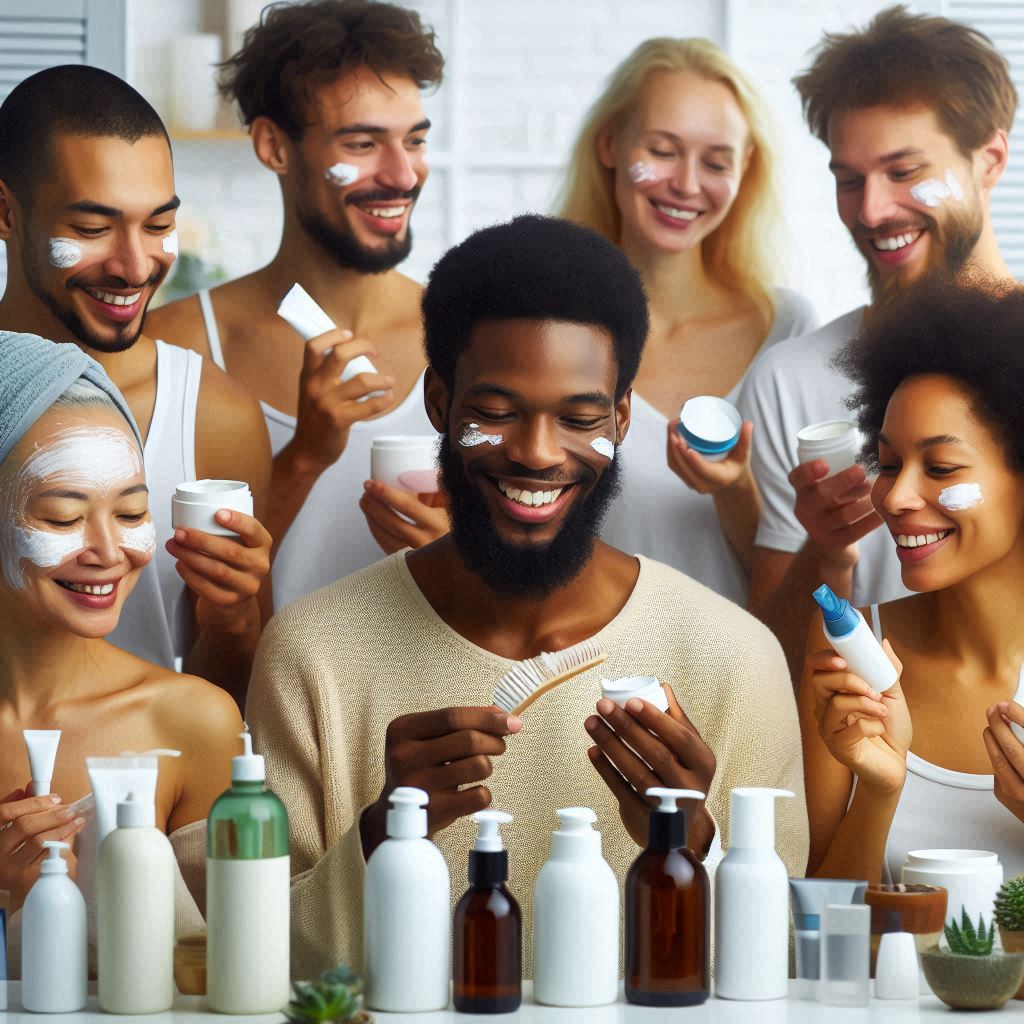
Best skin care routine
The Ultimate Skin Care Routine for Healthy, Glowing Skin
A great skin care routine is essential for maintaining healthy, glowing skin. It can help prevent common skin issues, delay the signs of aging, and keep your skin looking its best. Whether you’re a beginner or looking to refine your regimen, here’s a comprehensive guide to the best skin care routine.
1. Know Your Skin Type
Understanding your skin type is the first step in creating an effective skin care routine. The main skin types are:
- Normal: Balanced, not too oily or dry.
- Oily: Shiny, greasy, and prone to acne.
- Dry: Flaky, rough, and tight.
- Combination: Oily in the T-zone (forehead, nose, chin) and dry elsewhere.
- Sensitive: Easily irritated, prone to redness and reactions.

2. Basic Skin Care Routine
A basic skin care routine should consist of three main steps: cleansing, toning, and moisturizing. These steps are crucial for all skin types.
Morning Routine
- Cleanser:
- Choose a gentle cleanser suitable for your skin type.
- Use lukewarm water to avoid stripping natural oils.
- Cleanse your face to remove any impurities that accumulated overnight.
- Toner:
- Apply toner to balance your skin’s pH and prepare it for the next steps.
- Look for alcohol-free formulas to avoid drying out your skin.
- Serum:
- Serums are concentrated with active ingredients.
- For the morning, use a vitamin C serum to protect your skin from environmental damage and brighten your complexion.
- Moisturizer:
- Hydrate your skin to keep it plump and smooth.
- Choose a moisturizer that suits your skin type. For oily skin, opt for a lightweight, non-comedogenic formula. For dry skin, choose a richer, more hydrating product.
- Sunscreen:
- Sunscreen is essential to protect your skin from harmful UV rays.
- Use a broad-spectrum SPF 30 or higher every day, even on cloudy days.
Evening Routine
- Cleanser:
- Cleanse your face to remove makeup, sunscreen, and impurities.
- Consider a double cleanse: start with an oil-based cleanser to remove makeup, followed by a water-based cleanser to clean your skin.
- Toner:
- Apply toner to prepare your skin for better absorption of subsequent products.
- Serum:
- Use a serum with ingredients like hyaluronic acid for hydration or retinol for anti-aging benefits.
- Eye Cream:
- Gently apply eye cream to target specific concerns like dark circles, puffiness, or fine lines.
- Moisturizer:
- Apply a richer moisturizer at night to help your skin repair and regenerate while you sleep.
3. Weekly Treatments
Incorporate weekly treatments to address specific skin concerns and give your skin an extra boost.
- Exfoliation:
- Exfoliate 1-2 times a week to remove dead skin cells and promote cell turnover.
- Choose between physical exfoliants (scrubs) and chemical exfoliants (AHAs, BHAs) depending on your skin’s sensitivity.
- Masks:
- Use masks tailored to your skin needs. Clay masks are great for oily skin, hydrating masks for dry skin, and calming masks for sensitive skin.
4. Lifestyle Factors
Your skin care routine should extend beyond products. Consider these lifestyle factors for optimal skin health:
- Diet:
- Eat a balanced diet rich in fruits, vegetables, and healthy fats.
- Stay hydrated by drinking plenty of water.
- Sleep:
- Aim for 7-9 hours of quality sleep per night to allow your skin to repair and regenerate.
- Exercise:
- Regular exercise improves circulation, which can help your skin look healthier and more radiant.
- Stress Management:
- Practice stress-reducing activities like yoga, meditation, or hobbies you enjoy.
Conclusion
Creating a personalized skin care routine can make a significant difference in the health and appearance of your skin. By understanding your skin type, following a consistent routine, incorporating weekly treatments, and considering lifestyle factors, you can achieve and maintain glowing, healthy skin. Remember, consistency is key, and patience is essential as it can take time to see the results of a new skin care regimen.